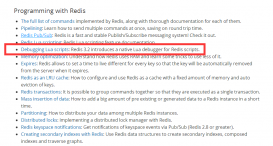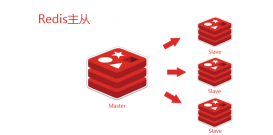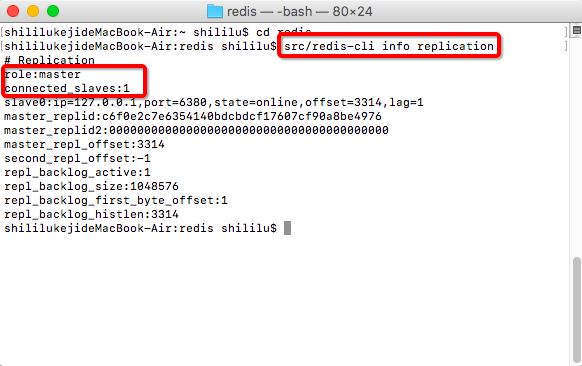1、前言
在java中,我们通过锁来避免由于竞争而造成的数据不一致问题。通常我们使用synchronized 、lock来实现。但是java中的锁只能保证在同一个jvm进程内中可用,在跨jvm进程,例如分布式系统上则不可靠了。
2、分布式锁
分布式锁,是一种思想,它的实现方式有很多,如基于数据库实现、基于缓存(redis等)实现、基于zookeeper实现等等。为了确保分布式锁可用,我们至少要确保锁的实现同时满足以下四个条件
- 互斥性:在任意时刻,只有一个客户端能持有锁。
- 不会发生死锁:即使客户端在持有锁的期间崩溃而没有主动解锁,也能保证后续其他客户端能加锁。
- 具有容错性:只要大部分的redis节点正常运行,客户端就可以加锁和解锁。
- 解铃还须系铃人:加锁和解锁必须是同一个客户端,客户端自己不能把别人加的锁给解了。
3、基于redis实现分布式锁
以下代码实现了基于redis中间件的分布式锁。加锁的过程中为了保障setnx(设置key)和expire(设置超时时间)尽可能在一个事务中,使用到了lua脚本的方式,将需要完成的指令一并提交到redis中;
3.1、redisconfig.java
|
1
2
3
4
5
6
7
8
9
10
11
12
13
14
15
16
17
18
19
20
21
22
23
24
25
|
package com.demo.configuration;import org.springframework.context.annotation.bean;import org.springframework.context.annotation.configuration;import org.springframework.data.redis.connection.redisconnectionfactory;import org.springframework.data.redis.core.redistemplate;import org.springframework.data.redis.serializer.genericjackson2jsonredisserializer;import org.springframework.data.redis.serializer.stringredisserializer;@configurationpublic class redisconfig { @bean public redistemplate<string, object> redistemplate(redisconnectionfactory factory) { redistemplate<string, object> template = new redistemplate<>(); template.setconnectionfactory(factory); // key采用string的序列化方式 template.setkeyserializer(new stringredisserializer()); // value序列化方式采用jackson template.setvalueserializer(new genericjackson2jsonredisserializer()); template.afterpropertiesset(); return template; }} |
3.2、redislockcontroller.java
|
1
2
3
4
5
6
7
8
9
10
11
12
13
14
15
16
17
18
19
20
21
22
23
24
25
26
27
28
29
30
31
32
33
34
35
36
37
38
39
40
41
42
43
44
45
46
47
48
49
50
51
52
53
54
55
|
package com.demo.controller;import org.springframework.beans.factory.annotation.autowired;import org.springframework.core.io.classpathresource;import org.springframework.data.redis.core.redistemplate;import org.springframework.data.redis.core.script.defaultredisscript;import org.springframework.scripting.support.resourcescriptsource;import org.springframework.web.bind.annotation.pathvariable;import org.springframework.web.bind.annotation.requestmapping;import org.springframework.web.bind.annotation.restcontroller;import java.util.arrays;@restcontroller@requestmapping("/redis")public class redislockcontroller { @autowired private redistemplate<string, object> redistemplate; @requestmapping(value = "/lock/{key}/{uid}/{expire}") public long lock(@pathvariable("key") string key, @pathvariable("uid") string uid, @pathvariable("expire") integer expire) { long result = null; try { //调用lua脚本并执行 defaultredisscript<long> redisscript = new defaultredisscript<>(); redisscript.setresulttype(long.class);//返回类型是long //lua文件存放在resources目录下的redis文件夹内 redisscript.setscriptsource(new resourcescriptsource(new classpathresource("redis/redis_lock.lua"))); result = redistemplate.execute(redisscript, arrays.aslist(key), uid, expire); system.out.println("lock==" + result); } catch (exception e) { e.printstacktrace(); } return result; } @requestmapping(value = "/unlock/{key}/{uid}") public long unlock(@pathvariable("key") string key, @pathvariable("uid") string uid) { long result = null; try { //调用lua脚本并执行 defaultredisscript<long> redisscript = new defaultredisscript<>(); redisscript.setresulttype(long.class);//返回类型是long //lua文件存放在resources目录下的redis文件夹内 redisscript.setscriptsource(new resourcescriptsource(new classpathresource("redis/redis_unlock.lua"))); result = redistemplate.execute(redisscript, arrays.aslist(key), uid); system.out.println("unlock==" + result); } catch (exception e) { e.printstacktrace(); } return result; }} |
3.3、redis_lock.lua
|
1
2
3
4
5
|
if redis.call('setnx',keys[1],argv[1]) == 1 then return redis.call('expire',keys[1],argv[2])else return 0end |
3.4、redis_unlock.lua
|
1
2
3
4
5
6
7
8
9
|
if redis.call("exists",keys[1]) == 0 then return 1endif redis.call('get',keys[1]) == argv[1] then return redis.call('del',keys[1])else return 0end |
4、测试效果
key123为key,thread12345为value标识锁的主人,300为该锁的超时时间
加锁:锁主人为thread12345
http://127.0.0.1:8080/redis/lock/key123/thread12345/300
解锁:解锁人为thread123456
http://127.0.0.1:8080/redis/unlock/key123/thread123456
解锁:解锁人为thread12345
http://127.0.0.1:8080/redis/unlock/key123/thread12345
4.1、加锁,其他人解锁


thread12345加的锁,thread123456是解不了的,只有等thread12345自己解锁或者锁的超时时间过期
4.2、加锁,自己解锁



thread12345加的锁,thread12345自己随时可以解锁,也可以等锁的超时时间过期
5、总结
- 使用redis锁,会有业务未执行完,锁过期的问题,也就是锁不具有可重入性的特点。
- 使用redis锁,在尝试获取锁的时候,是非阻塞的,不满足在一定期限内不断尝试获取锁的场景。
- 以上两点,都可以采用redisson锁解决。
到此这篇关于基于redis实现分布式锁的方法(lua脚本版)的文章就介绍到这了,更多相关redis实现分布式锁内容请搜索服务器之家以前的文章或继续浏览下面的相关文章希望大家以后多多支持服务器之家!
原文链接:https://blog.csdn.net/WU4566285/article/details/116622270















